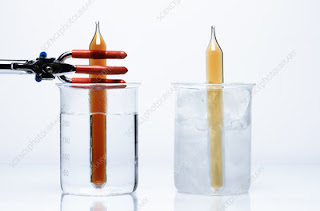Equilibrium systems often include gases, and systems that are entirely composed of gases are fairly common. It is therefore important to take a closer look at these systems. Specifically, we’ll take a look at the properties of gases that we most commonly work with and how these measurements relate to equilibrium.
Let’s start with the Ideal Gas Law (PV=nRT). We can rearrange this formula like this:
You don’t need to know why I chose to rearrange that way yet. You’ll see soon enough. Of course we know that moles over liters is molarity, so that equation can be rewritten as:
or, using the notation we use when we do equilibrium problems, we could get:
Now, let’s put that to work in an equilibrium setting. We’ll use this reaction for our purposes:
2 SO2 (g) + O2 (g) ⇄ 2 SO3 (g)
The equilibrium expression for this reaction is:
We can now substitute the formula above, which will give us:
This is beginning to look a little horrible, but bear with me. We can factor out the RT values (remembering that dividing by a fraction is the same as multiplying by the reciprocal). That will give us this:
We can combine like terms to get
then simplifying, gives us
Obviously, the exponent on the right is 1, but we'll leave it like this to make the point that we've been heading for on this page
On the left of the equation we have K. This is the equilibrium constant we've been using all along. It is sometimes written as Keq. In this context, we're going to label it Kc, since it is the equilibrium constant written in terms of concentration.
In the first set of parentheses we have something that has EXACTLY the same form as K except that it is written in terms of pressure values, rather than concentration. We'll call that KP. The last factor in the equation is RT (the gas constant x the temperature) raised to 3-2, which happens to be the moles of reactants - moles of products.
All of that is a long-winded way of saying that we can write this equation
It is also commonly written this way (although both are mathematically equivalent)
Why do we care?
In the end, after all of this algebra, there are a few simple and important ideas:
The equilibrium expression can be written as Kc (using concentrations) or as KP (using pressures)
Kc and KP are related but not equal (unless the moles of products = moles of reactants)
Equilibrium problems involving gases can be solved using EITHER concentrations (with Kc) or pressures (with KP).













No comments:
Post a Comment